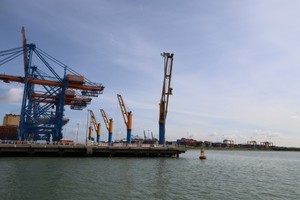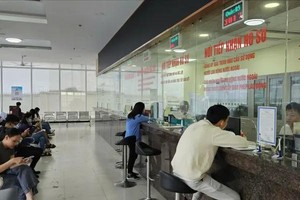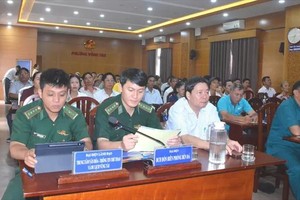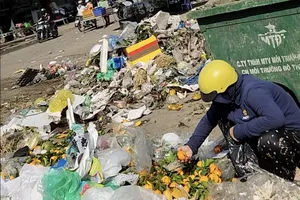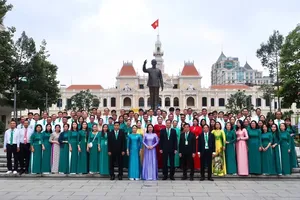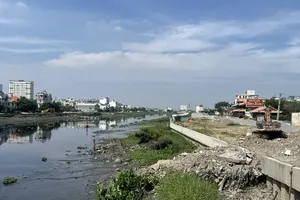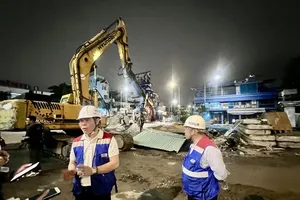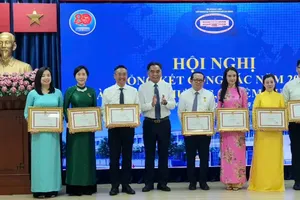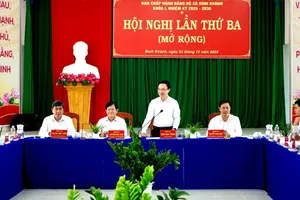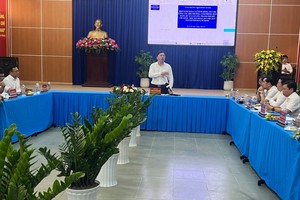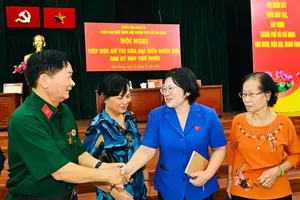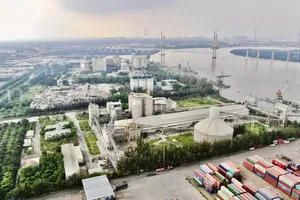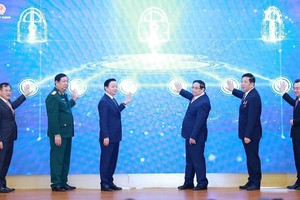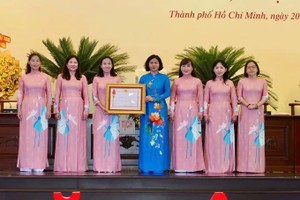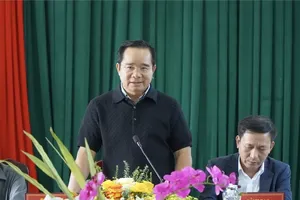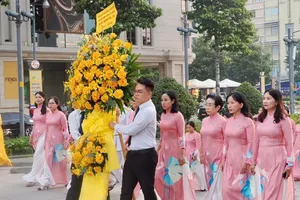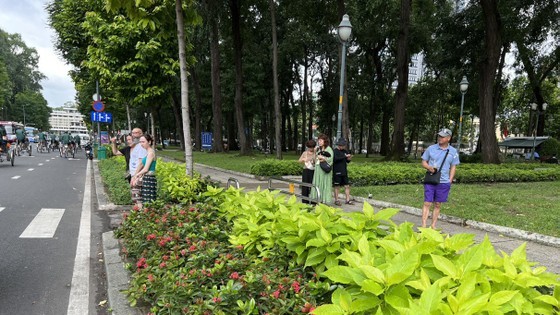 |
The green space along Le Duan Street in District 1 |
The latest research results from the Institute of Environment and Resources (VNU-HCM) show that each year, the total greenhouse gas emission amount in HCMC reaches over 60 million tonnes of CO2.
The three main exhaust fumes sources are industrial activities (20 million tonnes) coming from over 500,000 companies, transportation (13 million tonnes) of more than 8.7 million vehicles, and domestic activities of the population with a yearly increase rate of 200,000 people. Adding to that is the city’s estimated electricity use of 14 billion kWh in 2030, equal to the emission volume of 12 million tonnes of CO2.
Therefore, it is necessary to synchronously launch feasible solutions to reduce these emissions so that Vietnam can fulfill the committed goal of net zero emission in 2050.
Deputy Director Tran Van Bay of the HCMC Department of Natural Resources and Environment said that HCMC is the largest economy center in the nation, and is also the leader in devising practical solution for greenhouse gas emissions.
His department has lately adopted several measures to gradually cut this amount and better adapt to climate change, such as source separation of solid waste, green and recycled energy development, energy conservation campaigns, green production promotion.
Meanwhile, the HCMC Transport Department has piloted checking exhaust fumes for nearly 11,000 scooters. Among 7,300 city dwellers as well as state departments being surveyed, most support this exhaust fumes control scheme to reduce environmental pollution and greenhouse gas emissions, and hence the official proposal of this department to the HCMC People’s Committee on a long-term plan to control exhaust fumes released by scooters. By 2024, the city will pilot this control citywide, followed by a formal application in a part of the city from 2025-2026 and then in the whole city by 2030.
Moreover, HCMC is encouraging the growth of public transport types like co-friendly buses and metro lines in order to reduce both traffic congestion and greenhouse gas emissions.
The Japan International Cooperation Agency commented that HCMC should further collaborate with global organizations to enrich its technological and financial resources for activities to reduce greenhouse gas emissions. Agreeing with that view, Deputy Director Nguyen Tuan Anh of the Urban Distributed Energy Project in HCMC informed that the city is now working with the U.S. Agency for International Development (USAID) to implement this project for a ‘net-zero emission city’ in the future.
This project has three main parts of strengthening the local favorable environment, mobilizing investment resources, and promoting innovation. There are also related activities to control greenhouse gas such as devising strategies and plans for net-zero emission, supporting units with huge amounts of greenhouse gas emissions to perform their annual inventory, researching effective methods for water use in public construction works in the city, aiding waste-to-energy plants to join in the carbon market.
The project ran its models and analyzed possible scenarios from April to June 2023, followed by the development of a suitable route for a net-zero emission city from June to September 2023.
Before this, HCMC had collaborated with the Japan International Cooperation Agency, the Organization of City Leaders in the World for alleviating and adapting to climate change as well as launching technical measures for greenhouse gas inventory. This will be the foundation to identify suitable methods to decrease emissions for each specific field and industry.
Simultaneously, HCMC is cooperating with the World Bank to form a task force on comprehensive and sustainable growth of HCMC. This task force has 8 technical groups for 8 member projects, including the Low Carbon Emission one, whose goal is to create a logical plan to turn HCMC into an urban area with low carbon emissions.
Obviously, HCMC is striving day by day to cut the amount of greenhouse gas. To be successful in its plans and projects and to teach net-zero emission by 2050, the city needs the collaboration of all businesses and dwellers here.
